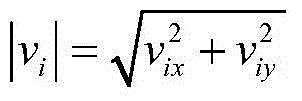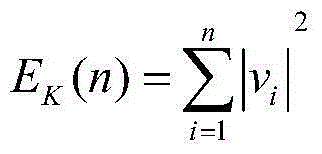STDF (standard test data format) feature based human behavior recognition algorithm
A recognition algorithm, human body technology, applied in the field of video processing, can solve problems such as weak descriptiveness, large number of sample points, sparse points of interest, etc.
- Summary
- Abstract
- Description
- Claims
- Application Information
AI Technical Summary
Problems solved by technology
Method used
Image
Examples
Embodiment Construction
[0022] In order to make the object, technical solution and advantages of the present invention more clear, the present invention will be further described in detail below in conjunction with the examples. It should be understood that the specific embodiments described here are only used to explain the present invention, not to limit the present invention.
[0023] An embodiment of the present invention provides a human behavior recognition algorithm, the human behavior recognition algorithm includes the following steps: according to the depth information of the video sequence, extracting the corresponding STDF feature;
[0024] Extract the STDF features of the sampling points, and establish the BoW model based on the LPM model;
[0025] Using SVM based on RBF kernel function to analyze the data in the established BoW to get the results.
[0026] Preferably, the specific steps of extracting the STDF feature of the sampling point are:
[0027] Calculate the motion salient area...
PUM
 Login to View More
Login to View More Abstract
Description
Claims
Application Information
 Login to View More
Login to View More - R&D
- Intellectual Property
- Life Sciences
- Materials
- Tech Scout
- Unparalleled Data Quality
- Higher Quality Content
- 60% Fewer Hallucinations
Browse by: Latest US Patents, China's latest patents, Technical Efficacy Thesaurus, Application Domain, Technology Topic, Popular Technical Reports.
© 2025 PatSnap. All rights reserved.Legal|Privacy policy|Modern Slavery Act Transparency Statement|Sitemap|About US| Contact US: help@patsnap.com



